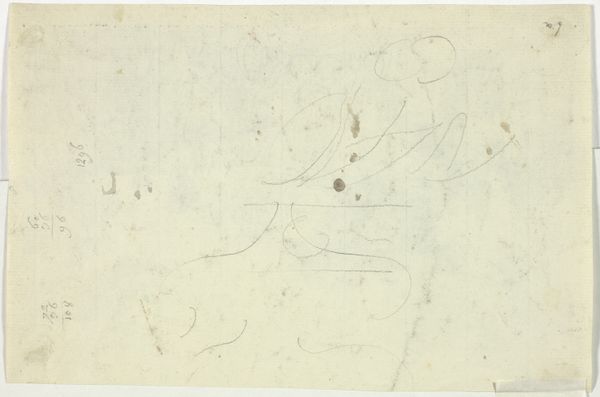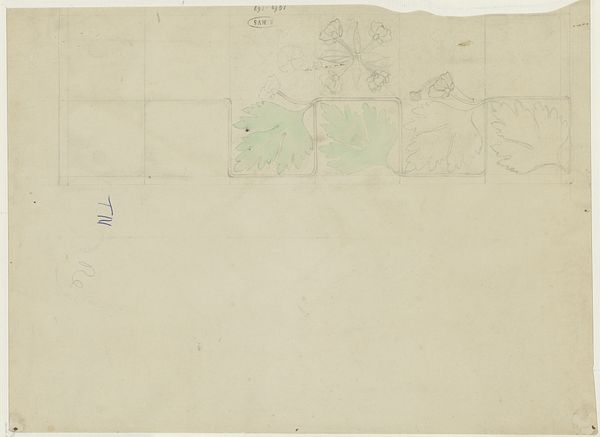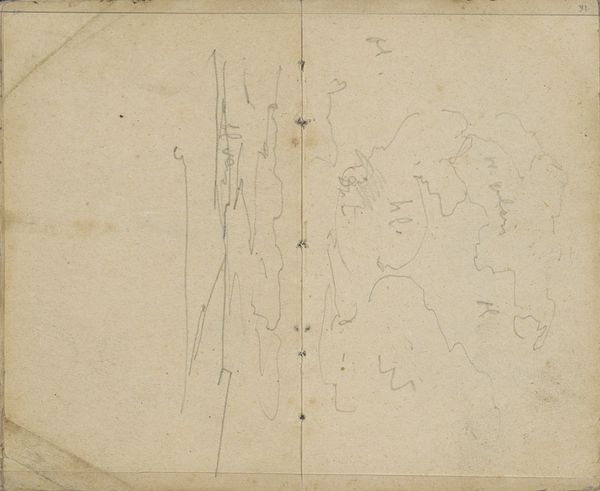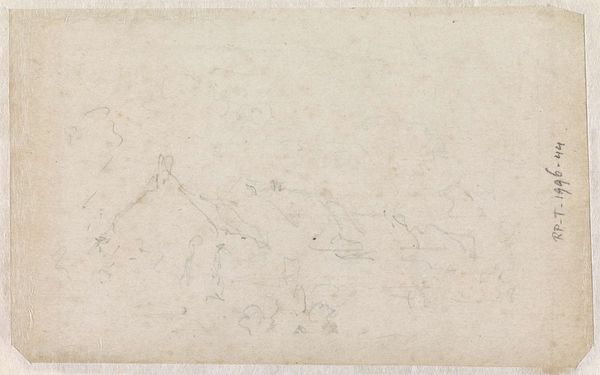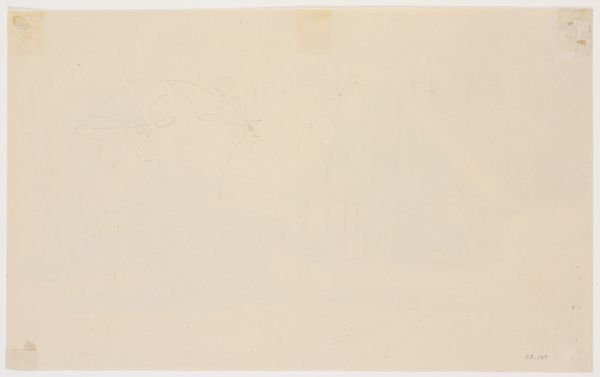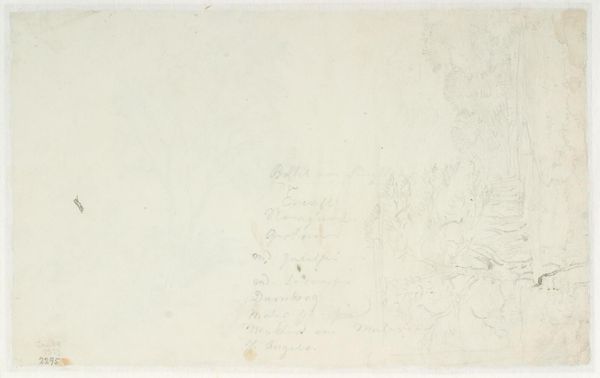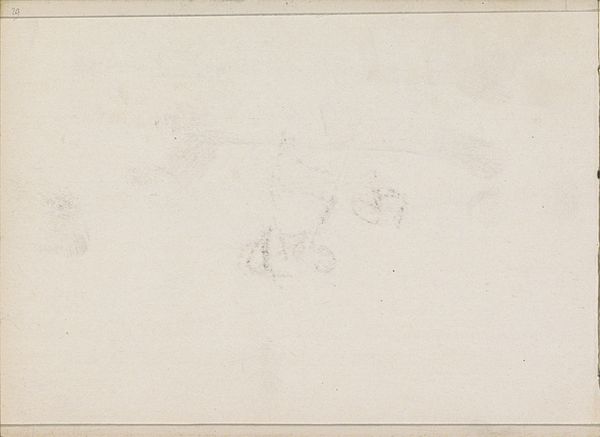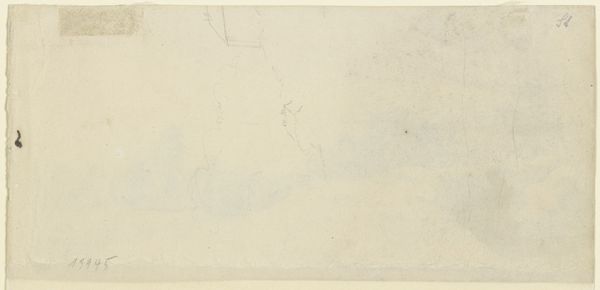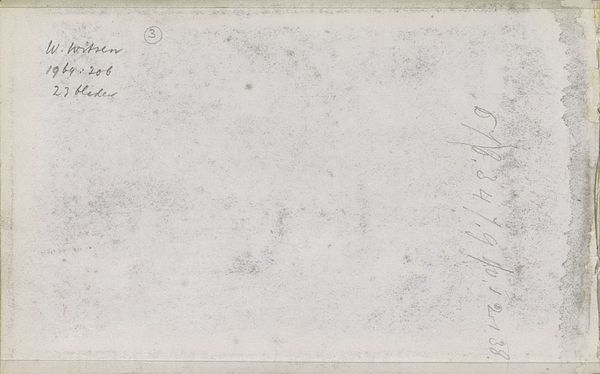
drawing, paper, pencil
#
drawing
#
neoclacissism
#
landscape
#
figuration
#
paper
#
pencil
#
line
Dimensions: height 113 mm, width 188 mm
Copyright: Rijks Museum: Open Domain
Curator: So, here we have "Eland," a pencil drawing on paper by Jan Brandes, created somewhere between 1788 and 1808. Editor: My first impression is that it's fragile and fleeting. The lines are so faint, it's like capturing a memory, almost vanished but held onto with a desperate, light touch. And the grid underneath makes it look very scientific, methodical, yet…still so tender. Curator: Absolutely. Brandes, deeply influenced by the Neoclassical movement, sought to document and categorize the world around him with scientific precision. These exploratory lines are key, suggesting that impulse toward capturing something objectively "true". He was traveling extensively, including time in South Africa and Indonesia. The grid supports this, acting as a sort of proto-photographic tool of recording. Editor: But the eland itself...it's not stiff or clinical, is it? There's a real sense of weight, a kind of hesitant movement. It is a drawing, even a bit romantic to see animal made linear, yet also dimensional in that time. The animal exists at an imagined horizon line... it doesn't really appear neoclassical! Curator: That’s precisely the tension that makes Brandes so fascinating! While embracing Enlightenment ideals and these principles from classicism in art and visual representation in a wider context, he infuses his work with observation, capturing the unique spirit of this animal from an unfamiliar landscape for a European audience. The act of representation itself comes into play. How "objective" is any observation from this period, or any? Editor: True. How do we represent nature without reducing it? Or framing it within our own cultural… gaze? This animal must have seemed truly alien. Looking at this drawing makes me feel how vast the world is...or at least, how vast it once felt. Like glimpsing something entirely new. Curator: The early museum was also forming, in a way to 'manage' vast colonial holdings through the controlled circulation of its knowledge. And with those power structures, also came the exchange and study of aesthetics across different places. That dialogue—then and now—gives this drawing a great resonance. Editor: Well, looking at it has given me a lot to think about. Thank you. Curator: The pleasure was all mine. A deceptively simple sketch, isn't it? But art always does that; shows us the unseen and asks the questions we’ve not yet fully formed.
Comments
No comments
Be the first to comment and join the conversation on the ultimate creative platform.
